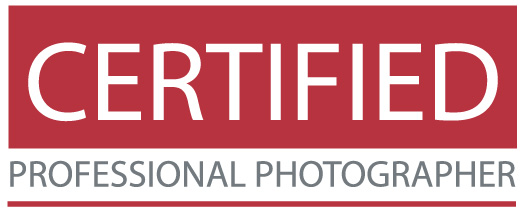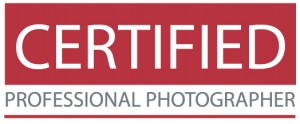In 2008, I was entering my 12th year as a quality professional in the chemical industry. Unfortunately, it was also the year I became a statistic. Suddenly, I found myself among one of the 2.6 million workers in the USA that lost a job that year.
The unemployment rate in my county jumped from mid 5% to above 11% within 6 months of my job loss, and less than a year later it was over 13%. Times were tough, jobs were scarce and I was afraid. Jobs within my industry were rare and would require relocation, which was not an option for me.
I evaluated my skill set and education to determine what my best course of action should be. Fortunately, I had a strong background in photography, including college courses and previous experience. At the time, I was a freelance photographer for a local newspaper and also photographed the occasional event or wedding. Event requests were steadily increasing and I had already begun the transition from part-time to full time photographer. I had joined the PPA in preparation for this transition, I just never realized how quickly I would need them.
After crunching numbers and doing some research, I decided that my best course of action would be to expand my services to include studio photography. I did some market research in my area, learned that there were only a handful of photographers nearby and felt that the area could reasonably support an additional photographer.
Within 3 months I was to learn how very wrong I could be.
In the fall of 2008, there was a sudden influx of new photographers in my small community. As I was buckling down to learn additional skills and establish my studio, there were many other folks with the same exact idea.
I was horrified and sick to my stomach. I was in the middle of sinking my entire severance check into studio construction and the associated equipment, while the piece of the photographic pie I expected to own grew smaller and smaller.
I needed to revamp what I was doing in a major way and gain an edge in what was becoming a very competitive industry.
I believe that the secret to success is education. I have several degrees, but not in fields related to photography. There was no resume I could point to that indicated any kind of expertise or education in a rapidly growing field of contenders for the same clients.
I thought back to my career as a quality professional. The letters CQA and CQIA were after my name on my business cards, indicating that I held several certifications with the American Society for Quality. These certifications opened doors for me, qualified me for specialized jobs and indicated that I had competence and mastery in my field.
I did more research, looking for some way, other than a four-year photography degree, that would indicate that I had a similar level of mastery and competence in the photographic field.
Through my PPA membership, I learned of the Certified Professional Photographer designation. In the midst of a very unstable situation, I finally had hope. My previous experience with professional certification was a positive one and I had confidence that it would serve as a valuable credential as I made the transition to my new career as a full-time professional photographer.
I expected that my clients would choose me based on this credential and it would put me head and shoulders above the rest of the competition. I also expected that it would give me credibility in the eyes of the photographers around me already in business. I had begun to see the effect of the massive growth in the number of photographers flooding the marketplace and understood this wasn’t setting too well with established photographers. I expected that certification would help me establish credibility with both my clients and my peers.
What I didn’t expect was that I would become ten times the photographer I already was by the time I achieved certification. Looking back, I now realize I knew very little in the beginning, and it was the most fortunate stroke of luck that I began working on my certification so close to the beginning of my career. I had much to learn and little to unlearn.
I simultaneously prepped for both the exam and the image submission from December of 2008 through April of 2009. With the CPP body of knowledge as my guide, I planned out an 18 week course of study. Any time I came upon a concept that was new, I looked up additional information online as well as in other books and periodicals. I approached it as if I was studying for college finals or writing a thesis. My previous certifications were also exam-based, so I was familiar with how in-depth I should understand the material.
As I learned and refined my skills while preparing for the exam, concepts began to “click” and new studio techniques became more understandable. My photography began to improve markedly as I began to incorporate everything I was learning into my work.
After four and a half months of study, I drove 14 hours round trip to take the exam in a neighboring state. While I waited for the test results, I began working on my image submissions. As I refined my submissions I evaluated the nuances in lighting, posing and composition that set apart some images from others. Many images under consideration were discarded and new client sessions were treated with more technical refinement than ever before in order to create images worthy of being included in my submission. I was truly my own worst critic and probably went overboard in my self-critiques, but this had been a hard process and I was determined to do it right the first time.
I chuckle when I look back and remember the process back then. CPP liaisons and exam dates were few and far between and there were no online study groups and mentors available like there are today. I had never met another CPP prior to taking the exam and every step I took through the process was accompanied by much research, trial and error. I’m pleased with the growth of the program and thrilled that our numbers have increased and that resources and help are much easier to access these days.
But back to 2009; for 38 angst-ridden days I waited for my test results. Meanwhile, I submitted my images and was also waiting on those results. As the days of waiting passed, I became convinced that my image submission would fail and I began prepping a second set of images.
By the time I received my letter from the PPA, congratulating me for achieving my certification, I was stressed out and did what any other woman in similar circumstances would do; I cried. With great joy and relief I embraced the designation, the certification and the process. Although it was difficult, I don’t regret it and would do it again.
I originally desired certification for what I believed it would do in regards to establishing me as a professional in the industry. What I ended up with, was a certification whose process made me the photographer I am today. Because of certification, I still approach every session as if a certification judge was going to review the resulting images, and will discard any image that I believe would not pass.
I continue to photograph and study as if I am preparing for certification, because I don’t believe that achieving the CPP is the final step in the certification process; I believe it’s the first step in the process of becoming the absolute best photographer I can be.


Could you share the various photos you took and the reasoning behind why they were or weren't good enough and how you critiqued them?